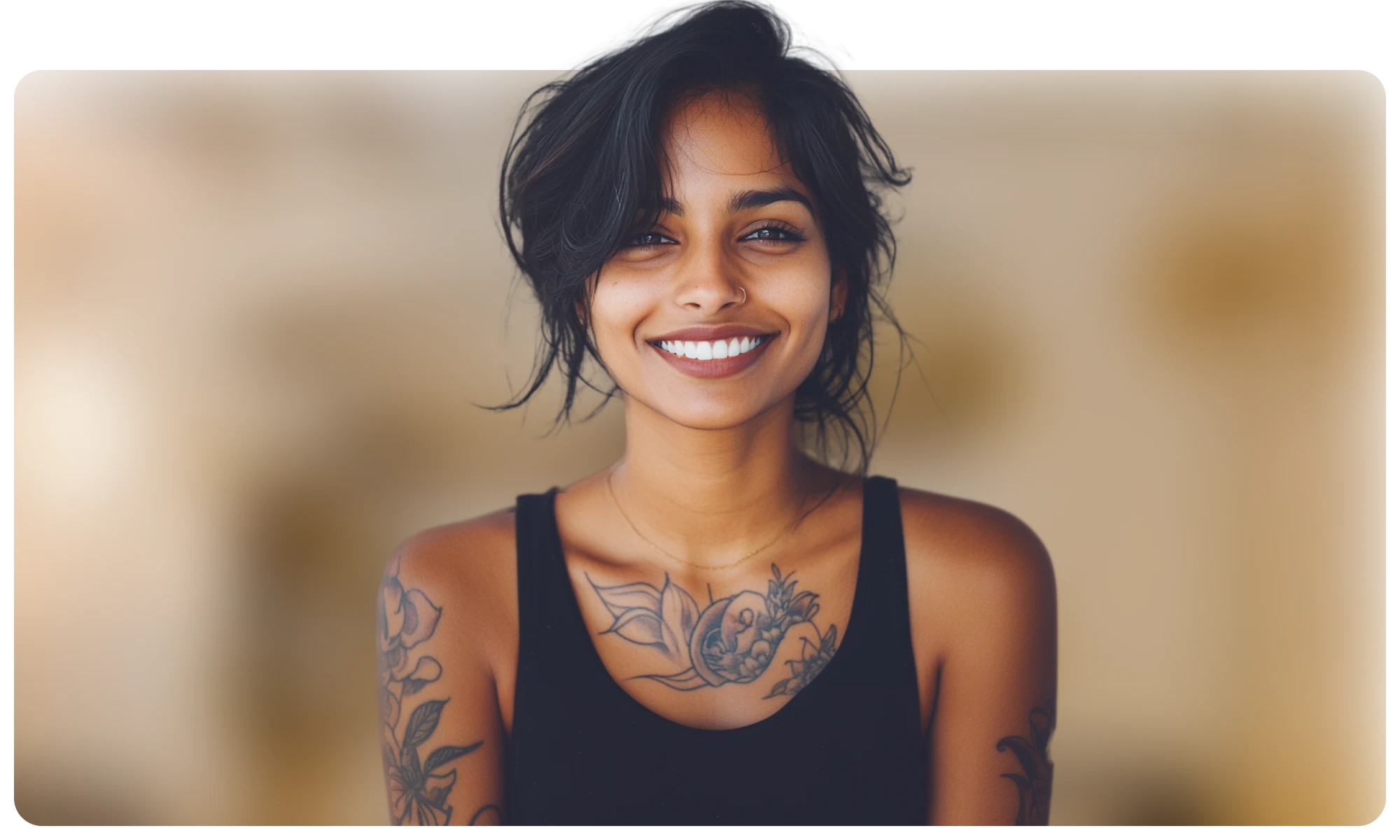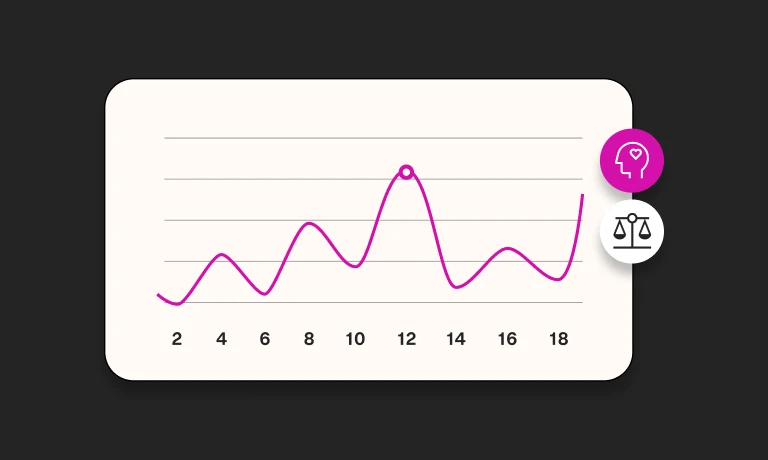Are you struggling to find the perfect candidates for your organization? Do you want to create a top-notch candidate experience while promoting your brand?
If you're nodding yes to these questions, it's time to switch things up and try inbound recruitment.
Keep reading to learn more about the ins and outs of inbound recruiting plus practical steps to help you master this recruitment strategy.
Table of contents
- Inbound recruiting explained
- Inbound vs. outbound recruiting: What’s the difference?
- What are the elements of an inbound recruitment strategy?
- How inbound recruiting benefits recruiting teams
- What about inbound recruiting's drawbacks?
- Ready to ramp up your inbound recruiting strategy? Get started with these steps and best practices
- Attract and find candidates with ease through inbound recruiting
Inbound recruiting explained
What exactly is inbound recruiting?
Inbound recruiting focuses on attracting, engaging, and converting top talent to your company. It is also often referred to as inbound recruitment marketing.
As a strategic approach to talent acquisition, it involves developing your employer brand to boost your company's appeal to potential applicants. This increases your chances of attracting qualified candidates to your organization and receiving more applications for your vacant positions.
The inbound recruiting approach is based on HubSpot's concept of inbound marketing, which is a way to attract customers by creating valuable content and experiences relevant to their needs and interests.
Here's what the inbound methodology in marketing looks like, courtesy of HubSpot.
Inbound recruiting works similarly to inbound marketing. By creating high-quality content and experiences for candidates, you can attract them to your company and build relationships with them over time.
When these candidates are ready to make a job change, they are more likely to apply to your company because they already know and trust you.
Here's what the inbound approach in recruiting looks like:
Inbound vs. outbound recruiting: What’s the difference?
Inbound recruiting is a candidate-centered approach to creating a talent pipeline for future hiring needs. As a recruitment strategy, it emphasizes proactive branding, content marketing, and creating a long-term strategy for building relationships with passive candidates. On the other hand, outbound recruiting is company-driven, with an active search for candidates to fill immediate hiring needs. It targets active job seekers and relies on direct outreach methods for efficiency.
It's worth noting that outbound recruitment is often more transactional, concentrating on filling immediate job openings. Both inbound and outbound recruiting have their merits and are often used together to meet an organization's various recruiting requirements.
The table below summarizes their differences.
| Inbound Recruiting | Outbound Recruiting |
Focus | Candidate-centric | Company-driven |
Purpose | Talent pipeline for the future | Filling immediate job openings |
Branding | Proactive employer branding | Immediate hiring needs |
Outreach methods | Content marketing, engagement | Direct outreach methods |
Relationship building | Emphasis on relationship building | Transactional, focused on immediate hires |
The best insights on HR and recruitment, delivered to your inbox.
Biweekly updates. No spam. Unsubscribe any time.
What are the elements of an inbound recruitment strategy?
When developing an inbound recruitment strategy, you have to consider the following key elements for attracting candidates and building a talent pipeline.
Employer branding
Building a strong employer brand is a must for inbound recruiting. This involves showcasing your company culture, values, and mission in a way that appeals to potential candidates. Use your website, social media, and other online platforms to communicate what working at your organization is like.
Content marketing
Create valuable content that educates and engages potential candidates. Great content for inbound recruitment includes blog posts, video interviews, webinars, and other resources that provide insights into your industry, career development, and your company's culture.
Career website
Your career website should be a central hub for all recruitment-related information. It should be easy to navigate, feature current job openings, and provide insights into your company's culture and values.
Recommended reading: 10 best career pages and tips on how to write one
Social media presence and engagement
Promote your employer brand and engage with potential candidates on social media platforms. Share content, interact with followers, and use social media as a channel to build relationships with potential employees.
Employee advocacy
Encourage your current employees to be brand ambassadors. They can share their experiences working for your organization on their social media profiles, participate in recruiting efforts, and refer potential candidates.
Talent pools
Create talent communities or talent pools of engaged potential candidates who have expressed interest in your organization. These communities can be nurtured and tapped into when job openings arise.
Recommended reading: Talent pool management and how talent assessments help you build and organize a database of potential candidates
Candidate relationship management (CRM)
Use talent acquisition technology and tools to manage and nurture relationships with potential candidates. Keep track of their interactions with your company and communicate with them regularly.
How inbound recruiting benefits recruiting teams
Inbound recruiting can also attract passive job seekers and enhance the candidate experience. Here's a quick look at the benefits of inbound recruiting.
1. Attracts passive job seekers and facilitates decision making
Companies can attract skilled passive job seekers with inbound recruiting, which resolves the HR paradox of having a pool of candidates but struggling to choose.
2. Enhances the candidate experience with a strong brand
With an inbound recruiting method, you’ll create a strong employer brand, which will contribute to a better candidate experience.
In turn, candidates are more likely to share their positive impression of your brand with others, providing additional marketing for your company and further building your brand!
3. Gives you access to a larger candidate pool and helps to diversify your team
As a result of this additional marketing, you can expect the size of your candidate pool to increase, and you’ll begin to attract hundreds or even thousands of people who are interested in your company.
With a larger talent pool, you’ll be able to amplify your efforts to diversify your existing team and hire a candidate who has the right skills for your organization.
4. Results tend to last longer than outbound recruiting
Inbound recruiting strategies have more long-term efficacy in terms of giving your organization a constant supply of potential candidates.
There’s no need to relaunch any recruiting efforts, as inbound recruiting lasts for a long time. Even though it takes longer to implement, you’ll notice long-term rewards for your efforts in terms of talent acquisition.
What about inbound recruiting's drawbacks?
While inbound recruiting offers several benefits, it also has some potential drawbacks and challenges.
1. It can be time-intensive and resource-intensive too.
Inbound recruiting can be a lengthy process and may not provide immediate solutions for urgent hiring needs.
In addition, building and maintaining a solid online presence, content marketing, and candidate relationship management can require significant time and financial resources.
2. Limited for specific roles
Inbound recruiting may not be a good fit in finding the best talent for highly specialized or niche roles, especially where passive candidates are scarce or specific skills are in high demand.
3. May not cover all demographics
In some cases, inbound recruiting efforts may not reach diverse or underrepresented candidate demographics, leading to a lack of diversity in the talent pool.
Ready to ramp up your inbound recruiting strategy? Get started with these steps and best practices
Inbound recruiting is not a one-size-fits-all approach. However, you can start with the following steps and best practices, and then tweak your process later based on your results.
1. Figure out your goals and objectives first.
First, determine what you want to achieve with your inbound strategy, such as increasing the number of quality candidates in your talent pipeline, improving your employer brand, or reducing time-to-fill.
For example, if your goal is to improve your employer brand, your objective might be to increase your company's presence on social media and receive a certain number of positive employee reviews or testimonials within six months.
2. Understand your target audience.
Next, create detailed candidate personas by understanding your ideal candidates' demographics, motivations, and preferences.
For example, if you're a tech company, your candidate personas may include a recent college graduate seeking career growth and a seasoned professional looking for challenging projects.
3. Build the foundation of your employer brand.
Craft authentic employer brand content that reflects your company's culture, values, and unique offerings.
HubSpot's "Culture Code" is a prime example of a transparent and compelling employer brand. They share their culture and values in a public document that has garnered significant attention.
4. Create, promote, and distribute high-quality content.
Now, the next step is to create informative, engaging, and helpful content that adds value to your audience.
Describe your company culture, career opportunities that are open to your candidates, and training and mentorships that successful candidates will receive.
Present the perks and benefits of your organization on an optimized company careers page by using quality content that reflects your brand. Your content should show off the positive experience employees have, which will help applicants get an authentic look inside your organization.
For this step, here are a couple of best practices:
Identify relevant keywords.
You can use tools like Ahrefs and Google Keyword Planner. Once you have your list of relevant keywords, incorporate them into your job postings, blog articles, and website content to improve search engine visibility.
Pick the right social media platforms where your target market is active.
There are multiple channels to choose from but pick the right social media platforms where your target market is active. Share your content, engage with your audience, and promote job openings. For example, Starbucks uses Instagram to showcase its company culture and share stories of its employees, giving potential candidates a glimpse into the Starbucks experience.
Build a landing page.
A landing page can be a sleek, conversion-centric part of your applicant funnel. Building one is a strategy that can help attract candidates to your organization, enhance the applicant experience, and encourage them to apply to your open position. When you build your career landing page, keep in mind that application drop-out rates tend to be higher if the page is difficult to navigate, confusing, byzantine, or otherwise results in a poor user experience.
Create a company blog.
A company blog that uses SEO approaches can help you attract applicants to your organization and drive organic traffic to your business. This recruitment marketing strategy involves implementing keyword research. You should also include employee profile features and share new employees’ journeys.
The content you create should be broad in its scope—for example, you could create a video highlighting the best of your business’ brand. Or you might create graphics or charts to show the success of your organization's team.
5. Sponsor events
Sponsoring events is a great way to attract top talent and build a strong employer brand. It allows you to connect with potential candidates in a personal way and showcase your company culture.
When choosing events to sponsor, consider your target audience and what types of events they would be interested in attending. For example, if you are looking to recruit software engineers, you might want to sponsor a hackathon or a tech conference. If you're going to hire sales professionals, consider supporting a sales conference or a networking event.
Once you have chosen an event to sponsor, you must develop a sponsorship plan. This plan should outline your goals for the event, your target audience, and how you plan to promote your brand at the event.
Finally, don't forget to follow up with leads. After the event, follow up with the leads you generated. This could involve a quick email, connecting with them on LinkedIn, or inviting them to a webinar.
6. Vet talent from your talent pool
When you start to attract candidates, your next step is to vet applicants and assess whether their skills align with your organization.
For instance, if you’re hiring a software developer, you must find out whether your candidates have experience with particular coding frameworks or skills that your business uses. It’s no good hiring a candidate who only has expert Python skills if your team uses Ruby frequently.
The ideal way to vet talent and their skills is to use a good-quality skills assessment platform that offers the following benefits for inbound recruitment:
Although you’ll have a broad talent pool when you use an inbound recruitment approach, skills assessments will facilitate the process of narrowing down your candidate options.
Even though inbound recruitment takes longer to implement than outbound strategies, you’ll save time during the vetting period with skills assessments.
Once you’ve enhanced your brand and found that you have additional spare time during the recruitment period due to your top inbound recruitment approach, you can focus on onboarding and effortlessly develop training programs based on skills test results.
7. Assess and measure key performance indicators regularly
Use web analytics to keep track of your inbound recruiting efforts such as your website traffic. Or if you’re using social media marketing to attract and engage potential candidates, assess which social media channels are most effective at attracting applicants.
You can also use application completion rate metrics to evaluate your efforts. This metric measures the ratio of applicants who have successfully completed an application for your open position compared with the total applicants who dropped out of the application process. Use it to deduce whether you need to tweak your branding efforts to reduce the applicant drop-out rate.
Since inbound recruitment strategies change over time, the other benefit of monitoring KPIs and recruiting metrics is that you’ll notice if you’re overspending your recruitment budget on fruitless areas of your recruitment campaigns.
Attract and find candidates with ease through inbound recruiting
Implementing an inbound recruiting strategy doesn’t have to be difficult. When you plan your strategy, keep in mind the importance of your brand, and ensure the tone of your content reflects your culture and values.
Remember, if you use SEO strategies to attract candidates, monitor your KPIs and recruitment metrics to keep track of how your recruiting efforts are progressing. Make adjustments where needed to enhance the efficiency of your hiring process.
Afterwards, assess your candidates with TestGorilla's skills testing. The best hiring decisions are a result of objective skills assessments. Create your free plan today.
You've scrolled this far
Why not try TestGorilla for free, and see what happens when you put skills first.

















